If your morning brew begins to taste different, climate change might be to blame.
A warming planet is threatening Arabica coffee plants, the ones most often used in the world’s production of coffee.
But as natural disasters damage those crops, two entrepreneurs in Southern California and New York City are finding alternatives — and changing the way we think about our daily cup of java in the process.
For example, there are openings for harvests outside the areas best known for coffee.
One place that could surprise you, Southern California, amongst the avocado and dragonfruit trees. That’s where coffee plants are growing on Jay Ruskey’s farm in Goleta, protected from the extreme heat that climate change can bring.
Ruskey has been farming for 30 years and over that time, Santa Ana winds have brought hotter and drier weather to Southern California. His response has been to layer his plants, coffee, avocado and dragonfruit together.
“So in the events that we've had in the last six or seven years, I've found that the coffee grown with other trees do much better during these peak events, either a heat event or a windy event,” Ruskey said.
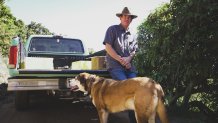
Across the country, in New York City, Sahra Nguyen is taking a different approach. She is importing coffee beans from Vietnam, where a different species, robusta, makes up the majority of the country’s crop. Many coffee connoisseurs argue that the bitterness of its beans makes it inferior to the more dominant Arabica, but Nguyen disagrees. Robusta coffee is delicious, she says. Just ask her customers.
Robusta crops have a high yield, and the beans contain twice the caffeine, 60% less sugar and oil, and less acidity. They are still affected by climate change, susceptible to drought, some insects and a fungus that causes coffee leaf wilt disease. But they are hardier against other diseases and pests, able to withstand higher temperatures, and can grow at lower altitudes. Those characteristics have become more important as climate change threatens coffee crops.
"[Robusta is] not immune from climate change, of course, but it is more resilient," Nguyen said. "It can be grown at warmer temperatures than Arabica. It can also be grown at various altitudes, in various climates and elevations. There seems to be more opportunity to expand robusta farming even as conditions change."
Coffee and climate change
The price of beans soared last year as drought and then frost destroyed crops in Brazil, leading to a global shortage from the world’s top supplier. A third of the country’s Arabica crop for the 2021 to 2022 growing season was lost, according to an estimate from the International Coffee Organization.
Overall exports of Arabica are down — 80.8 million 60-kilo bags in the 12 months ending in February 2022 compared to 82 million bags last year — but exports of robusta are up — 48.6 million bags compared with 47.5 million bags, the organization says.
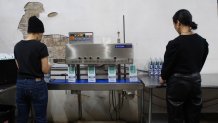
“Coffee is kind of an indicator species, I would say, of climate change because it’s very sensitive to different environment thresholds in terms of temperature, water, moisture, shade,” said Selena Ahmed, an assistant professor and researcher at Montana State University. “Each of those different environmental factors really impact the productivity and the ability of the coffee plant to produce really delicious beans.”
As weather patterns shift, harvest seasons arrive earlier or later and some places become wetter or drier, it becomes more difficult for farmers to plan when they are going to harvest, Ahmed said. The areas that are suitable for coffee production are moving into higher elevations, but farms cannot always relocate up the mountainside, she added.
Wild coffee plants, which the coffee plants grown on farms are derived from, are already in trouble. Aaron P. Davis, a researcher at the U.K.'s Royal Botanic Gardens, found in a 2019 study of 124 wild coffee species that at least 60% are threatened with extinction. A second study reclassified the wild Arabica from a species of “least concern” to “endangered.”
That matters because when domesticated coffee plants have been in danger from disease or pests, growers relied on wild coffee plants and genes to develop more resilient versions of the crop. But climate change is threatening both wild and domesticated crops.
For example, wild Arabica grows in Ethiopia and South Sudan, but due to increasing temperatures, deforestation, and shorter wet seasons, the number of wild plants could fall by at least half over the next 70 years, Davis and his researchers found.
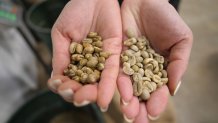
Robusta is the more heat-tolerant coffee species, but a 2020 study found that its optimal temperature range for production is lower and its sensitivity to temperature is higher than previously thought. Its production could decline considerably as temperatures rise with climate change, study authors wrote.
What's more, while "robusta development has brought substantial economic benefits in Vietnam, it has caused extreme environmental damage, including deforestation and biodiversity loss and water-table damage," Davis said.
One bright spot: a wild species rediscovered in Sierra Leone, called Coffea stenophylla, that combines tolerance to heat and flavor. Davis has called its taste amazing. Coffea stenophylla could be grown commercially in much warmer places that Arabica and be essential for the future of high quality coffee, Davis says.
Breeding stronger plants
Ruskey said he had been told for decades that coffee plants would not flourish in California. Though the climate around his Good Land Organics farm in Santa Barbara seemed hospitable, long summers and short winters, coffee was not grown so far from the Equator.
But in 2002, he planted 40 coffee plants from seed from Costa Rica among his avocado trees. Today, other farmers have followed though the numbers are still small.
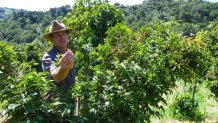
Consumers consider only certain regions of the world as suitable for growing coffee, Ahmed of the Montana State University said.
“We need to broaden our thinking about that,” she said.
His layering of plants better mimics how plants grow in the wild, she said.
“We can actually begin to manage our coffee systems in a way to mitigate the impacts of climate change based on the diversification in an agricultural system, based on our soil management, pest management,” she said.
Ruskey has created a breeding program to create plants that are more resilient to different rain patterns and that provide more yield. Farmers can make more and reinvest in their farms to keep up with the changing climate and changing markets.
Much of the coffee produced now is from old plants that are not as vigorous and are susceptible to disease, he said. Coffee growers must figure out how to let farmers plant new plants without losing income, he said.
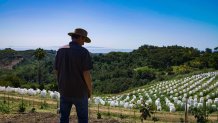
“But it is more expensive to do what we’re doing,” he said.
“I think coffee is a great reflection of how we look at our food system,” he said. “I think we under-appreciate a lot of our foods. And if we want to protect our food system, that’s very unstable right now, we’re going to have to pay a little bit more. Maybe less for our cell phones and more for our food. I don’t know.”
Robusta beans or bust
As the CEO of Nguyen Coffee Supply, Nguyen works in a shared roasting facility in Brooklyn to produce different roasts, one of which is 100% robusta, another that is a blend of robusta and Arabica, the two main species of coffee.
“When you’re roasting [robusta], it is more delicate because you have less oil to work with,” Nguyen said. “From a flavor experience, it’s going to be much more bold, dark chocolatey and nutty.”
Before starting her company, Nguyen worked as a freelance writer and documentary filmmaker and spent a good amount of time in coffee shops. She said she was puzzled when she asked baristas about the Vietnamese coffee on the menus. It was usually in a Vietnamese style, with condensed milk, but it tasted little like the coffee she remembered as a child, and the beans never seemed to be from Vietnam.
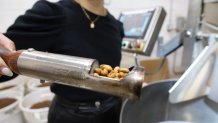
In fact, Vietnam is the second-largest exporter of coffee after Brazil. But because most high-end coffee uses Arabica beans, the industry has pigeonholed Vietnam and its robusta beans into making cheap products, like instant coffee.
“If the industry is saying, 'Just make cheap coffee and that’s what we’re going to buy from you,’ they’re going to make cheap coffee,” she said.
Nguyen is trying to change that. Coffee is improved by organic farming with all natural biofertilizers and no pesticides, and by better harvesting, when the coffee cherries are hand picked only when they are red and ripe, she said. It is more time and labor intensive.
“If it’s not [for specialty coffee], they just grab all the beans off the branch whether it’s green or red because it goes into this blend,” she said.
The farm that Nguyen uses for her coffee is organic and run by a fourth-generation farmer in Da Lat, in Vietnam's Central Highlands. She visited in 2016 and established a direct-trade partnership with the farmer, whom she met through her aunt. Most of Nguyen's extended family is in Vietnam, even though her parents fled by boat during the war and she was raised in Boston.
Making a difference, one bean at a time
Nguyen Coffee Supply, founded in 2018, is the first roaster in the U.S. to import single-origin robusta and Arabica beans from Vietnam. One of Nguyen’s goals is celebrate the Vietnamese coffee heritage and improve robusta beans' reputation in specialty coffee circles so the farmers can benefit.

Last month, she raised $2.6 million in seed funding from a group of investors. Her coffee is sold online and in stores and is served at restaurants. One is Saigon Social in New York City, which opened just as the coronavirus was shutting down the country in 2020. Its owner, Helen Nguyen, says she likes the robusta beans and their low acidity. She was opening a pop-up restaurant at the same time that Sahra Nguyen was researching and developing her roasts.
"I was very fortunate to be a part of that process," she said. "Whenever she was testing certain batches, she would give us samples."
During the coronavirus pandemic lockdown, Nguyen Coffee Supply raised $45,000 for the Vietnam COVID-19 relief fund, and for Earth Day 2021, it donated 1,000 trees, according to the company’s 2021 Sustainability Report. The company is also beginning to try to measure its environmental impacts — energy and water use, emissions, effluents and waste — both in the U.S. and in Vietnam.
Meghan McDonough contributed reporting, photography and video production.

